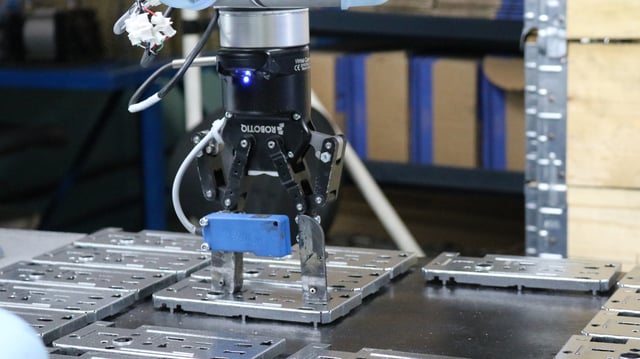Manual to Robotic Cell Conversion Checklist

Once you have a robotic cell concept, comparing the robotic cell to the manual cell will help you evaluate whether or not you should move forward with the deployment project. The book Lean Robotics – A Guide to Making Robots Work in Your Factory recommends mapping the manual process and the robotic cell process, and then comparing the maps.
This article provides a checklist of questions to ask when comparing the manual and robotic cell process maps as advocated in the Lean Robotics book. Asking for input from stakeholders including engineers, operators, and maintenance personnel can help provide more complete answers.
How would the robotic cell affect KPIs?
Start with the KPIs defined in the manual task map. Would the robotic cell KPIs change or need to be measured in a different way?
Would the robotic cell improve quality?
Even if quality is a KPI, it’s worthwhile to look at it again in more detail, and be sure that quality is being defined and evaluated properly in terms of who the customer is, and what the customer needs, even in cases where the “customer” is the next step in the process.
Would the robotic cell affect the cell customer?
Does anything need to change on the customer side if a robotic cell were used? For example, if the robotic cell produces output slower than the manual cell and doesn’t take breaks, the pace will be affected. Can the customer cell accommodate the throughput of the robotic cell?
Would the robotic cell require an alteration to the current parts presentation or quality?
If the answer to this question is yes, it could negatively impact some of the cost and time-saving gains. For example, if the manual tasks involve picking up items from a disordered pile or inspecting and cleaning parts, the robotic cell will most likely require preliminary steps or modifications to earlier processes to address these issues. Be sure to account for this in your evaluation.
How would the robotic cell affect the layout?
Compare the actual layouts side by side and look for any potential problems caused by the differences. Does the robotic cell need to be fenced? Does any nearby equipment needs to be moved? How easy or difficult would it be to move that equipment?
How would the robotic cell reduce waste (time, materials, or non-value-added operations)?
In processes where robotic cells are ideal, such as repetitive, dangerous or dirty tasks, waste reduction should be easily quantifiable. For example, a robot can perform the same movement over and over without a break to prevent repetitive stress injury. Robots can also perform some dangerous tasks without requiring the precautions a human would need. Note any efficiencies gained with the robotic cell.
Would the robotic cell be able to exchange necessary information?
Are operators in the manual process using handwritten notes or instructions? What happens in a changeover? Look for steps in the manual task map that affect information flow. Underestimating the complexity or scope of the required information flow can cause project delays. This is also an excellent opportunity to re-evaluate which information is necessary. Is extraneous information included from an old legacy process? Be sure that all information provides value. Before looking at how the information will be exchanged, carefully define what information needs to be exchanged.
In addition to the information needed to execute the cell tasks, a robotic cell can provide extra maintenance, quality, and tracking information. Evaluate the potential data-gathering ability of the robotic cell to take advantage of the opportunity for automating part of your continuous improvement process. All stakeholders should have input in this evaluation so that they understand how the robotic cell can provide information that couldn’t be captured efficiently or accurately in the manual cell.
After completing the evaluation process once, go back and see how the answers to different questions will affect each other. For example, adding monitoring to the robotic cell may not affect the cell KPIs, but could provide huge benefits to maintenance and overall productivity.
The evaluation process outlined in the Lean Robotics book will allow you to refine your concept of the minimum viable robotic cell and decide whether or not it makes sense to deploy. For more information about designing a robotic cell and reducing uncertainty in your lean robotics project, visit leanrobotics.org.









Leave a comment